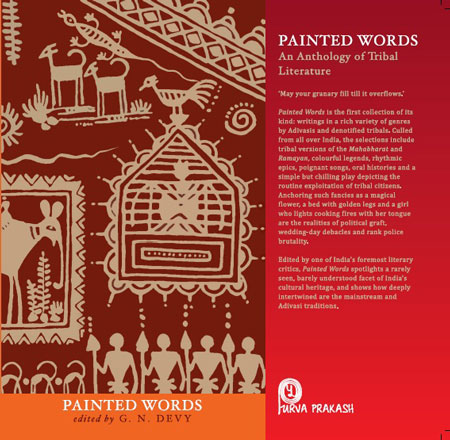EQUATIONS envisions a just and equitable world, where all people have the freedom and the right to determine their lives and future. | Learn more on the Equations website | Equations blog >>
We envision forms of tourism which are non-exploitative, where decision making is democratised, and access to and benefits of tourism are equitably distributed. EQUATIONS believes in the capacity of individuals and communities to actualise their potential for the well-being of society. We work toward justice, equity, people centred and movement centred activism, democratisation and dialogue.
Everyday we hear that tourism brings economic development, it creates jobs and revenues. But who really benefits from it? The local community, the village elite, or the owner?
There’s been an exponential increase in tourism in India over the last several decades, fueled by the growing economy and disposable incomes. The tourism industry in India has expanded wildly in an unregulated fashion with no regard for environmental, social and cultural impacts.
[…] Please find attached EQUATIONS submission on concerns we have in relation to tourism’s role in the exploitation of women. Key concerns we would like to raise are summarised below:
In our quest for tourism that is more equitable, sustainable and just we have had on our radar the impact that current forms of tourism development have on women’s lives. […]
On the social and cultural front, tourism also reflects social, economic and political power relations existing in society, therefore, initiatives taken in relation to tourism should take into consideration these realities. Women from Dalit communities constitute large part of cleaning jobs, especially manual scavenging (95%). They face discrimination on both caste and gender grounds and are subjected to multitude of atrocities including rape.
The marketing of tourism is one area which features women prominently. The language of patriarchy, heterosexuality and tourism promotion are inter-linked and primarily addressed to the need of male tourists. Stereotypical and sexist images of women are often part of tourism promotion in brochures and advertisements.
We call upon governments, policy makers, industry, civil society to engage in more systemic ways with the challenge of women’s empowerment in tourism. It is time for the government to recognise tourism as a site for blatant and inhuman exploitation of women in tourism. We urge the committee to incorporate provisions to protect women at tourism destinations and declare that tourism will not be promoted at expense of women’s dignity, respect and rights. […]
Surabhi Singh
Programme Coordinator EQUATIONS
Source: Equitable Tourism Options (EQUATIONS) | Submission To Justice Verma Committee On Tourism’s Role In Tourism
Address : http://www.equitabletourism.org/campaign.php?AID=2687
Date Visited: Mon May 12 2014 14:26:39 GMT+0200 (CEST)
[Bold typeface added above for emphasis]
Tips for using interactive maps
Toggle to normal view (from reader view) should the interactive map not be displayed by your tablet, smartphone or pc browser
For details and hyperlinks click on the rectangular button (left on the map’s header)
Scroll and click on one of the markers for information of special interest
Explore India’s tribal cultural heritage with the help of another interactive map >>
See also
Adverse inclusion | Casteism | Rural poverty
Demographic Status of Scheduled Tribe Population of India (Census figures 2011)
Fact checking | Figures, census and other statistics
Human Rights Commission (posts) | www.nhrc.nic.in (Government of India)
Search tips | Names of tribal communities, regions and states of India
“What is the Forest Rights Act about?” – Campaign for Survival and Dignity
“Who are Scheduled Tribes?” – Government of India (National Commission for Scheduled Tribes, NCST)

Tribal Literature by G.N. Devy >>
Free eBooks & Magazine: Adivasi literature and languages >>
“India, a union of states, is a Sovereign, Secular, Democratic Republic with a Parliamentary system of Government. The President is the constitutional head of Executive of the Union. In the states, the Governor, as the representative of the President, is the head of Executive. The system of government in states closely resembles that of the Union. There are 28 states and 8 Union territories in the country. Union Territories are administered by the President through an Administrator appointed by him/her. From the largest to the smallest, each State/UT of India has a unique demography, history and culture, dress, festivals, language etc. This section introduces you to the various States/UTs in the Country and urges you to explore their magnificent uniqueness…” – KnowIndia (Government), States and Union Territories (Visited: 2 September 2023)
Learn more about India’s 28 States and 8 Union Territories – From Andhra Pradesh to West Bengal | Nutrition >>
See also
Accordweb.in | Accord | Articles by co-founder Mari Marcel Thekaekara | Shola Trust
Atree.org | Ashoka Trust for Research in Ecology & the Environment (posts)
Climate change | Audio | The Climate Question (BBC Podcast)
Environmental history and what makes for a civilization – Romila Thapar
Equations blog (Equitable Tourism Options)
Information provided by Indian government agencies and other organizations (FAQ)
Nature and wildlife | Crocodile | Elephant | Tiger | Mangrove forest | Trees
PARI’s tales from tiger territory | People’s Archive of Rural India (PARI)
United Nations on climate change
What is the Forest Rights Act about?
Who is a forest dweller under this law, and who gets rights?